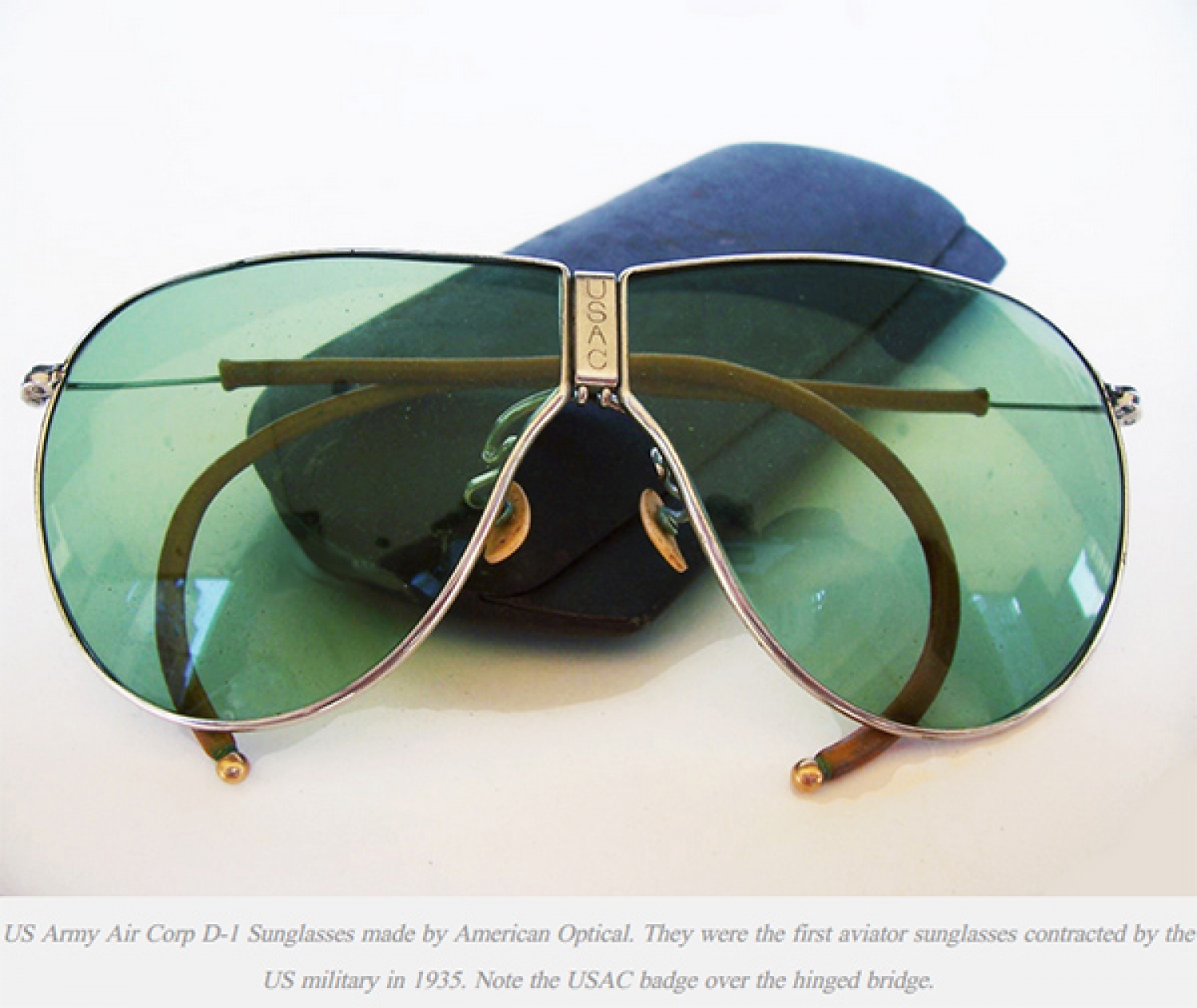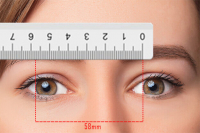To quote US Army Air Force (1) by Robert Pitta, Jeff Fannell and Gordon L Rottman: “The American Optical Co. D-1 flying goggle assembly, standardized on 13 August 1935, was actually a pair of sun glasses with a rigid frame and plastic insulated arms. It was superseded by the more comfortable flying sun glasses (comfort cable) in November 1941.”
It is noted that the plate between the lenses it reads USAC (for U.S. Air Corps). It covers a hinged bridge, which traces its roots back to 1891.
Of course 1935 was before Ray Ban even existed. And Bausch & Lomb (which isn’t Ray Ban, by the way) wasn’t even the contractor.
There are claims bouncing around the interwebs that certain companies invented aviator style sunglasses. Then again there are claims bouncing around the interwebs about who invented the interwebs.
Since the birth and development of aviator sunglasses is an epic story.
Were Victorian bicyclists really going so fast that this was necessary, or was the inventor a futurist who foresaw the proliferation of faster and faster motorcars and manned flight?
According to investigations that examined the bicyclist’s shield the basic design of aviator sunglasses descended from. First patent date: 1891. It was notable for its basic shape and hinged center. 20 years later (most likely after the original patents ran out) in 1911 the Auto-Glas was introduced.
It had a wire frame and lenses made of glass rather than stone and standard wire temples. The bridge still hinged but overall it’s a familiar shape.
If you’re a collector, nowadays rimless versions of the Auto-Glas are harder to find than the all wire frame version, most likely because they broke more easily and were probably discarded rather than refitted with the unusually sized lens. Note the pair to the right is rimless.
It should be mentioned, real aviators during the WWI era tended to wear glasses with side shields or full goggles. Open cockpits made this extra protection necessary, but when closed cockpits were developed the sunglasses previously considered “motoring glasses” then became “aviator sunglasses”.
Hinged bridge motoring/aviator sunglasses remained a dominant style until WWII.
It’s probably best to go back to the mid-19th Century for a look at the first industrial safety glasses in order to get an idea of the style’s evolution. They differed from ordinary spectacles of the period by virtue of having larger lenses that were clear and non-prescriptive.
Until these were developed eyewear in the West had small lenses. These, in fact, were the first “big” eyeglass frames.
The larger lenses provided some protection against flying particles. Eventually safety glasses with screens for lenses, all kinds of side shields and other goodies would be developed, which provided better protection. We’ll take a look at them sometime. But today we’re focusing on aviator sunglasses.
A main distinguishing feature of the aviator sunglasses is they have two bridges: a conventionally placed bridge and a second bar connecting the two lenses near the browline.
In a wire frame with large lenses, the second bridge is needed to keep the frame stable and keep the eyewires holding the lenses from bending in relation to each other.
This second bridge was first seen in the safety glasses of the early 20th Century.
Around the same time sunglasses with two fixed bridges were developed for motoring. These, in fact, looked more or less like the aviator sunglasses we know.
In fact the basic “aviator” shape was seen in a wide variety of motoring sunglasses of the early 20 Century.
So basically, what most would consider aviator sunglasses have been around for well over 100 years.
The classic style of aviator sunglasses we’re most familiar with. The “flying sun glasses (comfort cable)” was standardized in November 1941.
The lenses were made to a joint standard shared by the U.S. Army Air Corps and the U.S. Navy. As a result the lens carried an “AN” (Army/Navy) specification number: the AN6531. The U.S. Government specified the shape of the lens and the color, which was initially a 50% green tint. This tint proved insufficient to protect pilot’s eyes from sun glare so this lens was superseded by the AN6531 Type 2 lens in rose smoke.
Various contractors made the frames and ground the lenses. These included American Optical, Bausch & Lomb, The Chas. Fischer Spring Co. (which primarily made AN6530 Goggles) and Willson. Frame and hinge design varied slightly from contractor to contractor. Ray Ban is not included, this is probably because, not a single pair of Ray Ban branded sunglasses was issued by the U.S. Government to Army or Navy aviators during WWII. Ray Ban was a civilian division of Bausch & Lomb.
After the war Bausch & Lomb marketed facsimiles of the AN6531 sunglasses to the general public, as did most of the other contractors that produced them. They did so under the Ray Ban brand. The Ray Ban brand is no longer a part of Bausch & Lomb.
For some reason, however, it is still reading that Ray Ban “invented” aviator sunglasses, but it seems to be inaccurate. If someone reads this article and can have other contributions that help to know the real origins of aviator sunglasses, we would be very pleased.







